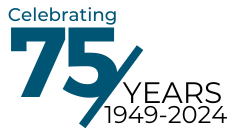Whether you are new in the workforce or a long-time employee, saving for retirement is a necessity. At some point in the future, you will not be able to work anymore, and you have to make sure you have enough money when this happens. Take these five steps so you can save enough money before you exit the workforce.
Start as Early as You Can
No matter how old you are, it’s never too early to start saving for retirement. If you start saving money at a young age, you will have more money to use than someone who started later on. For example, someone who starts saving $100 each month at the age of 25 will have more money than a person who starts saving the same amount at the age of 30, so long as both people retire at the same age.
Saving up early can net you a lot of extra money for retirement, so if you have settled into your first big job, you should start planning for the future.
Automate Savings
Another thing you can do to save up money for retirement is to set up an automatic savings system with your bank. Many financial institutions have a system that allows you to automatically set aside money when you get your paycheck. Review the amount of money you make with each payment, and determine how much you should set aside each month.
This allows you to save some extra money every time you receive your paycheck, so you will not have to worry about doing it yourself.
Set Up a 401k Plan
When you are discussing retirement with others, some will probably mention the 401k plan. Many employers offer this plan, and it allows you to save money from your paycheck before it’s taxed. The money you save from this plan can be set aside or invested, and this is usually done through target-date funds, bonds, and stocks.
Adding to this, you should also see if your employer offers matching contributions with the 401k plan. You can use this plan to have your employer contribute a certain amount of money to your retirement plan by matching your contributions with payments of their own. The amount that is matched typically varies from business to business.
If you are interested in a 401k plan, sit down with your employer to see what they offer you.
Open an IRA
Besides the 401k plan, you can also set up an IRA to save money for retirement. Also known as the individual retirement account, an IRA will allow you save money with tax-free growth. Through an IRA, you can potentially open new investment opportunities, which can net you more money for retirement.
The types of available IRA plans include a Traditional IRA, Roth IRA, Rollover IRA, and many more. By using a Roth IRA, for example, you can set aside money from your post-tax income up to a specific amount every year. Future withdrawals are tax-free when you use this specific plan, making it a very enticing choice.
Review Your Budget & Spend Less When Possible
An easy way to save money is to review how much of it you spend each month. By looking over your recent payments, you can find ways to cut back costs so you can save some money for the future. For example, if you find that you are spending a lot of money when you go out for lunch, try making your own lunch for a few weeks.
If you are paying a large amount of money for something you don’t really need, cut it out of your budget so you can save a few bucks in the long run. Put that extra money into a savings account so you can hold onto it until you need it later down the road.
Want to have an easy way to organize your important financial documents? You can use Avery’s Ready Index® Dividers to divide up your work binders so you can locate a particular document in no time at all.
Sponsored by:


